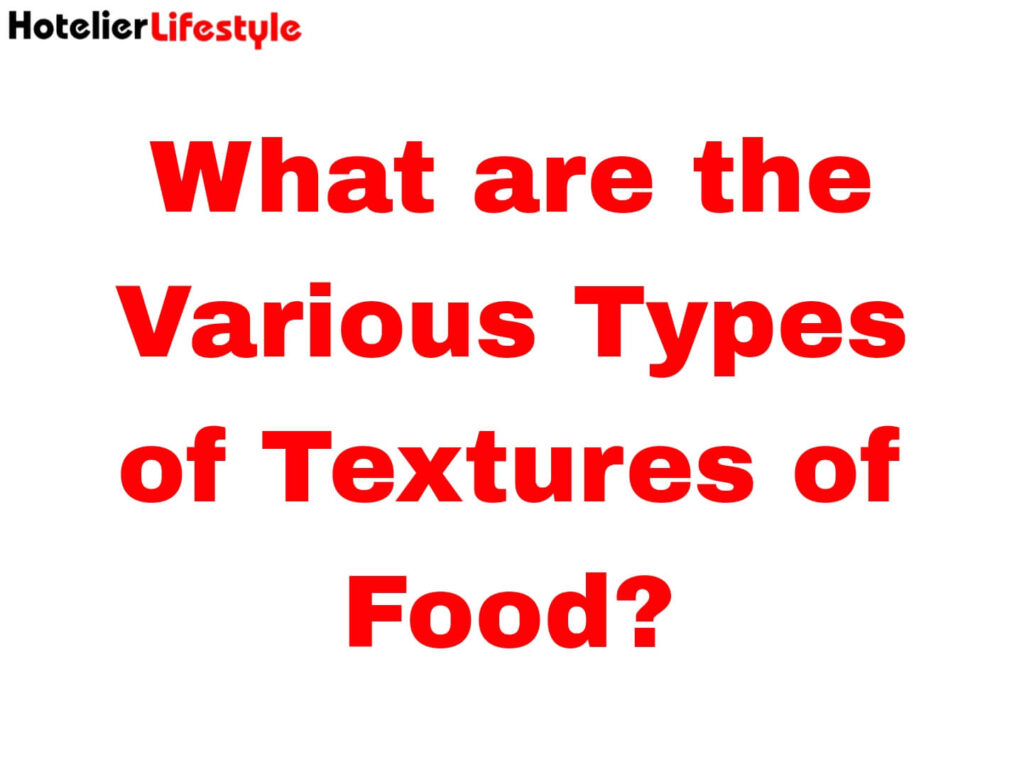Food textures refer to how foods feel when they are eaten. They cover a range from crisp and crunchy to smooth and creamy, which come with different feelings. Crispy foods give a good crunch that mostly comes along with fried or baked things like chips or crackers. On the other hand, smooth ones such as creamy desserts like mousse or custard have velvety texture in mouth. Other examples of these are chewy found in breads like in a heavy loaf of bread, where as tender is like properly cooked meat. By intertwining all of these textures together, culinary experience becomes more vivid and appealing in its totality so as to heighten the enjoyment of what one is taking during feeding times.
Importance Textures of Food
The importance of food textures is that it can elevate the overall pleasure and satisfaction in eating by enriching one’s sensory experience. The multiple flavors created through different kinds of food consistencies or textures not only improve the taste but also heighten the touch experienced when eating various meals. However, a blend of a variety of tactile qualities within a meal makes it more spirited and delightful. For instance, combining stir-fried vegetables which are crunchy with tender meat presents difficulty in each bite while soup which is silky soothes and pampers you. Furthermore, they provide rooms for emotional connections since they can bring about some nostalgic feelings or remind us of our culture. In summary, grasping food texture as well as valuing them will raise this act of cooking or dining into an unforgettable momentous venture that stimulates all the senses and the tongue too.
Types of Textures of Food
Absolutely, here are a number of textures typically found in food:
- Crispy: It is when you bite on it with satisfaction that there is a crunch experienced in the mouth. This is common in foods like potato chips which have been fried or baked to acquire brownish golden color.
- Creamy: Creaminess yields a smooth texture and velvety feeling in the mouth usually related to ice cream, pudding or mashed potatoes with rich, dense consistency.
- Chewy: Bagels, steaks and certain types of bread such as sourdough exhibit resistance to our teeth that makes them feel chewy.
- Tender: This texture refers to a more relaxed and yielding structure that’s often seen on properly cooked meats like slow-roasted pork or braised beef as well as vegetables such as asparagus and broccoli which have been steamed.
- Crumbly: In this case, these textures tend to easily fall apart into tiny parts. For example shortbread cookies, pie crusts or aged cheddar cheese may represent some of those examples.
- Spongy: Spongy textures of food are porous and elastic in nature. They can be found in sponge cake, some types of bread e.g.brioche or ciabatta and foods such as tofu or mushrooms with certain attributes.
- Brittle: Brittle textures of food are hard but can easily break with a snap or crunch. Examples include peanut brittle, toffees, some crackers among others.
- Silky: Silky textured dishes feel smooth and luxurious with a very fine/slick touch for instance custards, flans or sauces like hollandaise/béarnaise.
These varied consistencies make the entire sensory experience more interesting when one consumes them thus giving more depth to the culinary artistry.

